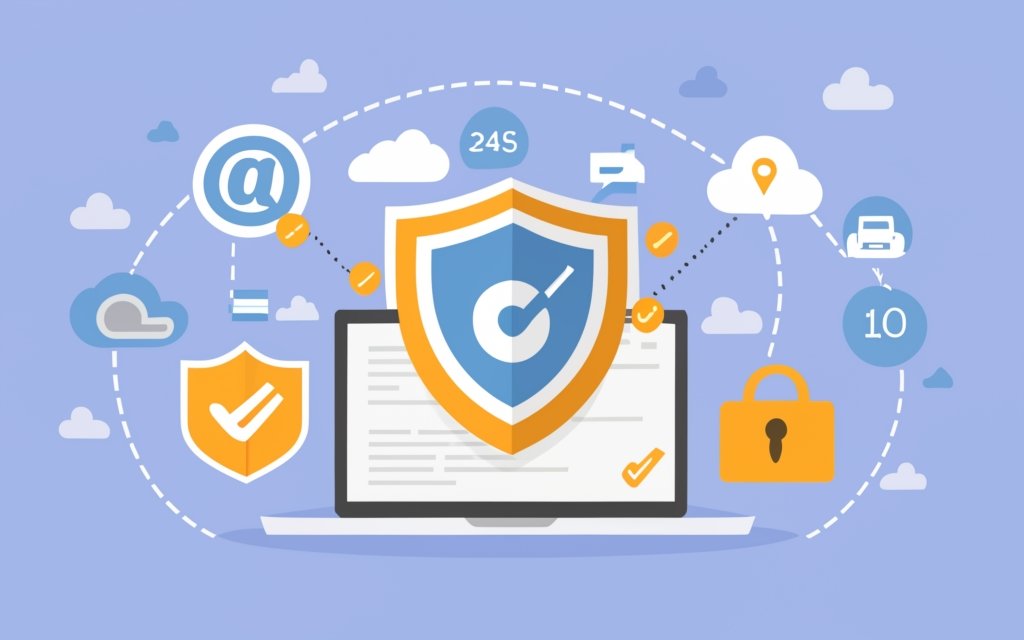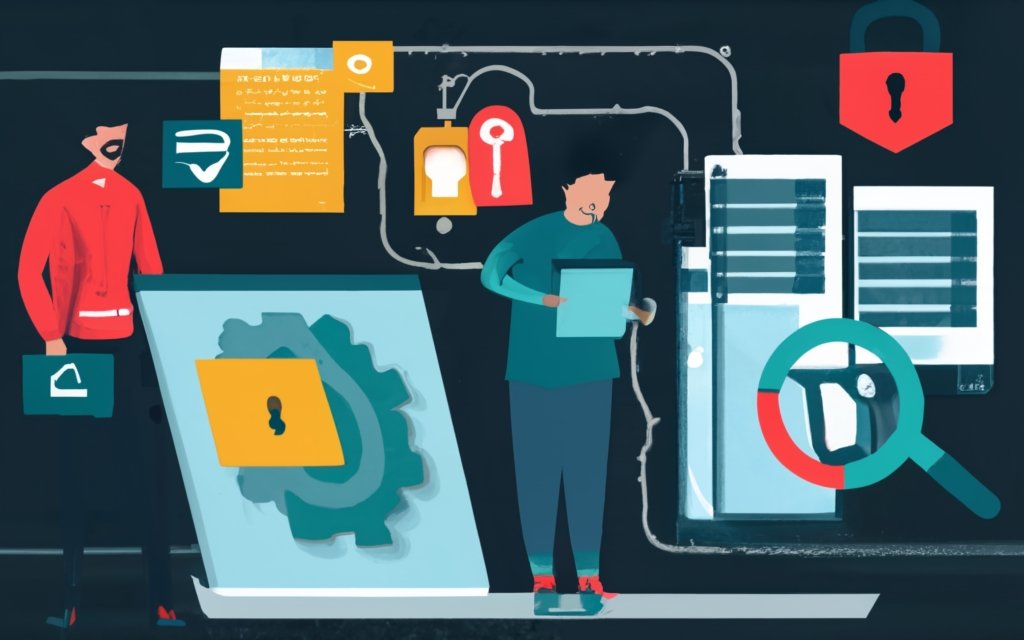Understanding Cloud Security Risks
Adopting cloud technologies undoubtedly boosts business agility, scalability and cost savings. However, storing valuable data offsite also introduces new attack vectors that security teams must comprehend to enable safe migrations.
Common cloud risks include compromised credentials for cloud service access, vulnerable interfaces, lack of activity monitoring and limited data control. Misconfigurations routinely expose sensitive information. Without robust cloud data security countermeasures, organizations risk high-impact breaches.
Acknowledging these dangers allows pragmatically balancing cloud advantages against security investments like privileged access management, micro-segmentation and data encryption. The first step towards safety is admitting where problems can arise.
Cloud Security Best Practices
Robust cloud security requires coordinated efforts across access governance, network controls and activity monitoring. Core data should stay encrypted both at rest and in transit, only decrypting temporarily within tightly controlled environments to remain usable.
Strict permission policies prevent inadvertent data leaks from overexposed storage or databases. Hardware security modules manage keys securing sensitive information. Virtual private networks and firewalls selectively limit network traffic while intrusion detection tracks anomalies.
Ongoing optimization ensures configurations match intended policies amid changing assets. Resources scale up securely through automation rather than adhoc adjustments. Regular audits validate collective measures.
Cloud Data Security
Cloud data security focuses on properly classifying digital assets, assessing risks in migrating them then implementing appropriate safeguards respecting compliance needs and operational objectives. Governance frameworks align security with business priorities.
Architectural best practices help avoid common pitfalls like using single cloud accounts across environments or retaining excessive administrator access. Monitoring unauthorized data access attempts counteracts insider threats. Recovery capabilities restore integrity after incidents.
The responsibilities split between cloud providers and clients necessitates security coordination. While vendors secure underlying infrastructure, customers must configure built-in controls appropriately towards meeting regulatory and privacy goals. Training prevents misuse.
Table 1: Common Threats to Cloud Data Security
| Threat | Protective Measures |
| Compromised Credentials | Multi-factor authentication, privileged access management |
| Misconfigurations | Automated policy validation, reference architectures |
| Malicious Insiders | Activity monitoring, access reviews |
| Data Breaches | Encryption, database security, microsegmentation |
| System Vulnerabilities | Penetration testing, prompt patching |
| Malware Infections | Endpoint detection, anomaly detection |
| DDoS Attacks | Web application firewalls, load balancing |
Cybersecurity and Cloud Computing
Cybersecurity teams enable organizations to harness the automation and efficiency of cloud computing without sacrificing data protection. Cloud architects rely on security specialists to assess and implement controls defending sensitive information.
Security staff combat data threats through governance principles, defensive technologies and vigilance while cloud engineers focus on optimal delivery and availability of digital resources. Cross-departmental collaboration empowers innovation without introducing preventable risks from knowledge gaps at either end.
Upfront security planning allows smoothly scaling systems over time, avoiding scramble plugging gaps later. Well integrated cloud security sustains growth by capping dangers. Smooth coordination between functions prevents oversights undermining trust.
Regulatory Compliance in Cloud Security
Numerous data regulations like GDPR, HIPAA and PCI DSS include mandated cloud controls around encryption, activity monitoring and access management when dealing with regulated information. Non-compliance risks heavy fines alongside lawsuits.
Certifications like ISO 27001 and SOC 2 provide cloud-focused security framework guidance. Phase-based compliance roadmaps help balance development velocity with legal obligations in implementing standards. Each deployment decision should validate against technical and legal requirements.
Upfront regulatory analysis prevents future continuity threats from incompatibilities between architectures and commitments. Integrating compliance teams early in cloud projects containing sensitive data will pay long-term dividends.
Strategies for a World-Class Cybersecurity Operations Center
Efficient cybersecurity operations centers (SOCs) empower continuous defenses for cloud environments by unifying tools, metrics and talent. Integrating endpoint, network and application data reveals full attack narratives.
Tiered alert triaging directs junior resources towards routine incidents while senior talent spearheads substantive response efforts. Collaboration technologies like SIEM enhance situational awareness. Tech investments target automation for repetitive tasks during minor events.
Effective SOCs nurture partnerships across infrastructure, application development and business leadership. Shared context sustains rapid, data-driven decisions. Promoting cloud security fluency across functions breeds resilience.
Cloud Security and Data Protection
Safe cloud adoption requires prudent assessment of usage objectives, risk tolerance levels and data criticality before aligning appropriate technologies towards driving down dangers. Governance, encryption and access controls prevent breaches threatening operations or compliance.
Disaster recovery architecture maintains availability despite outages through regional redundancy and backup orchestration. Detailed response playbooks empower restoring services using offsite replicas untainted by primary infrastructure failures.
Regular testing validates recovery plans. Drills breed familiarity in smoothly invoking data protection workflows during actual incidents. With informed preparation, organizations reliably bounce back from cyberattacks and accidental failures alike.
Incident Response and Cloud Security
Cybersecurity teams must spearhead rapid containment and eradication of threats within cloud environments before irreparable data loss or continuity impacts. Tabletop simulations ready personnel for coordinated action amid chaos.
Effective response requires updated architecture documentation, communication protocols and technical capabilities for isolation, forensic capture and malicious code neutralization. Integrating cloud-native controls facilitates accurate incident scoping.
Shared post-mortems prevent recurrence while empowering targeted hardening initiatives. Security staff should actively educate colleagues on risks, protections and the need for vigilance across functions, not just during incidents.
The Role of Encryption in Cloud Security
Encryption represents the last line of defense for cloud data security when other safeguards fail. Properly implemented algorithms render breached information unusable for malicious purposes. Key management processes prevent unauthorized decryption.
Technologies like homomorphic encryption allow limited computations on encrypted data to support usability needs. Data stays protected at rest, in use and in transit across untrusted channels. Encryption thereby creates resilient last resort options when risks materialize despite governance precautions.
Standards like AES-256, RSA-2048 and TLS 1.3 provide proven protection grounded in time-tested mathematical principles. Appropriate encryption stratified by data sensitivity limits worst-case exposure while supporting operational needs.
Conclusion: Embracing Cloud Security Best Practices
Migrating services to the cloud sparks inevitable security changes in operating models. Robust data protections in these environments require updated risk awareness alongside tactical implementations of access governance, micro-segmentation, encryption and multi-layered threat detection.
Smooth integrations between security and cloud teams prevent blind spots through collaborative digitization. Prioritizing regulatory compliance and continuity planning sustains long-term growth. With adequate vigilance and preparation, organizations can tap into the full potential of cloud computing without sacrificing trust.

Richard Sena is a seasoned expert and thought leader in the rapidly evolving world of cryptocurrencies, blockchain, and decentralized finance (DeFi). With over five years of dedicated professional experience in this niche, Richard has become a respected voice in the crypto community. His journey into the world of cryptocurrencies began much earlier, fueled by a deep-seated passion for the transformative potential of blockchain technology and its myriad applications.
Richard’s expertise is not just limited to cryptocurrencies; he is deeply passionate about blockchain security and is always on the lookout for innovative solutions that enhance the robustness and resilience of blockchain systems. His work ethic is characterized by a relentless pursuit of excellence and a constant drive to refine and perfect his craft. As a team player, Richard believes in the power of collaboration and knowledge sharing, often working closely with others in the field to push the boundaries of what’s possible with blockchain technology.


